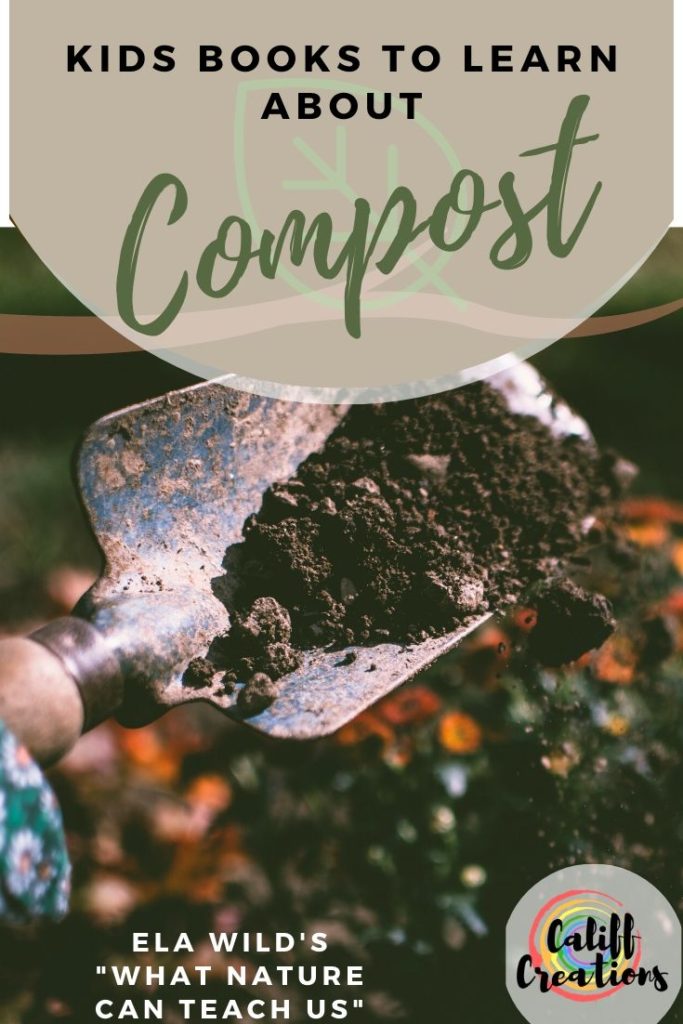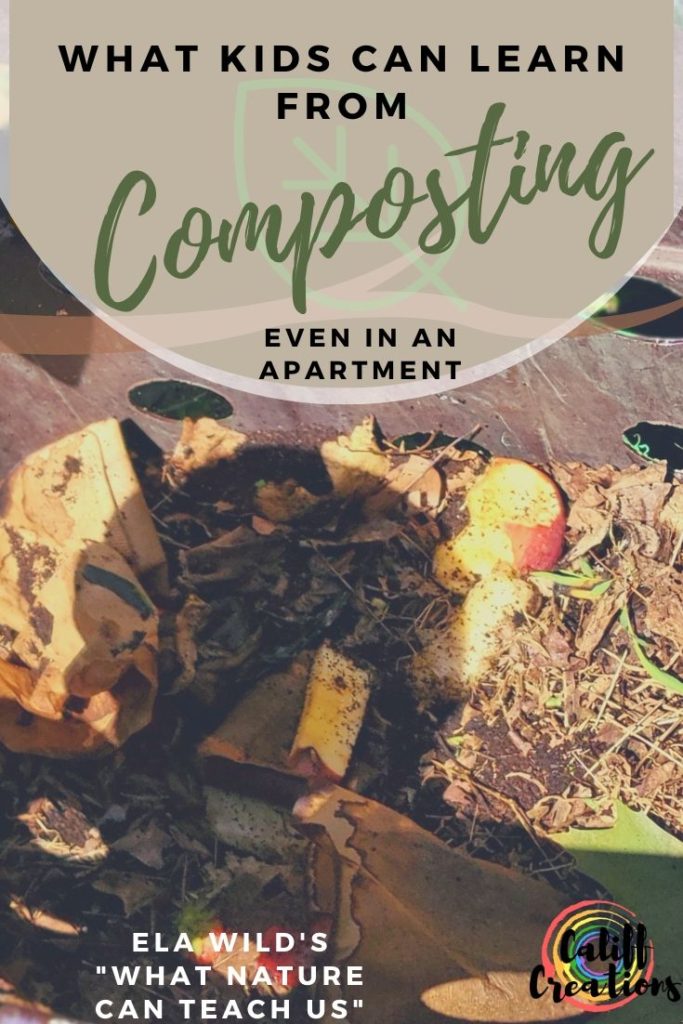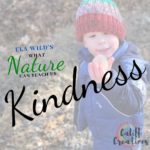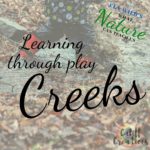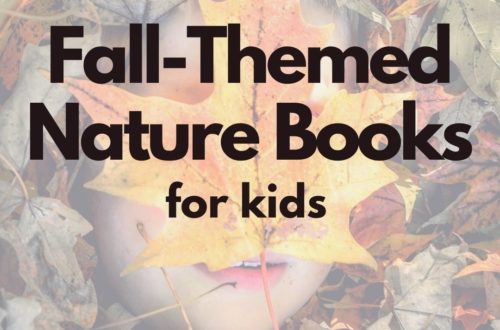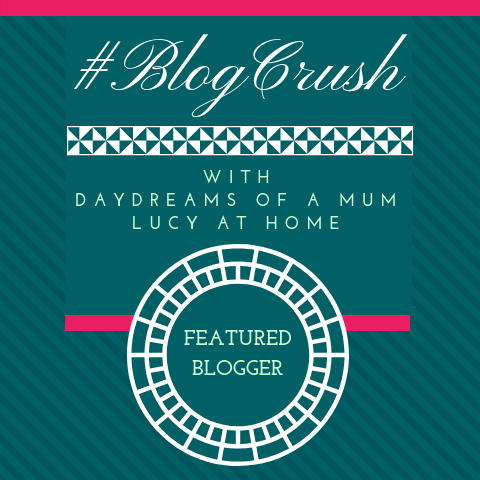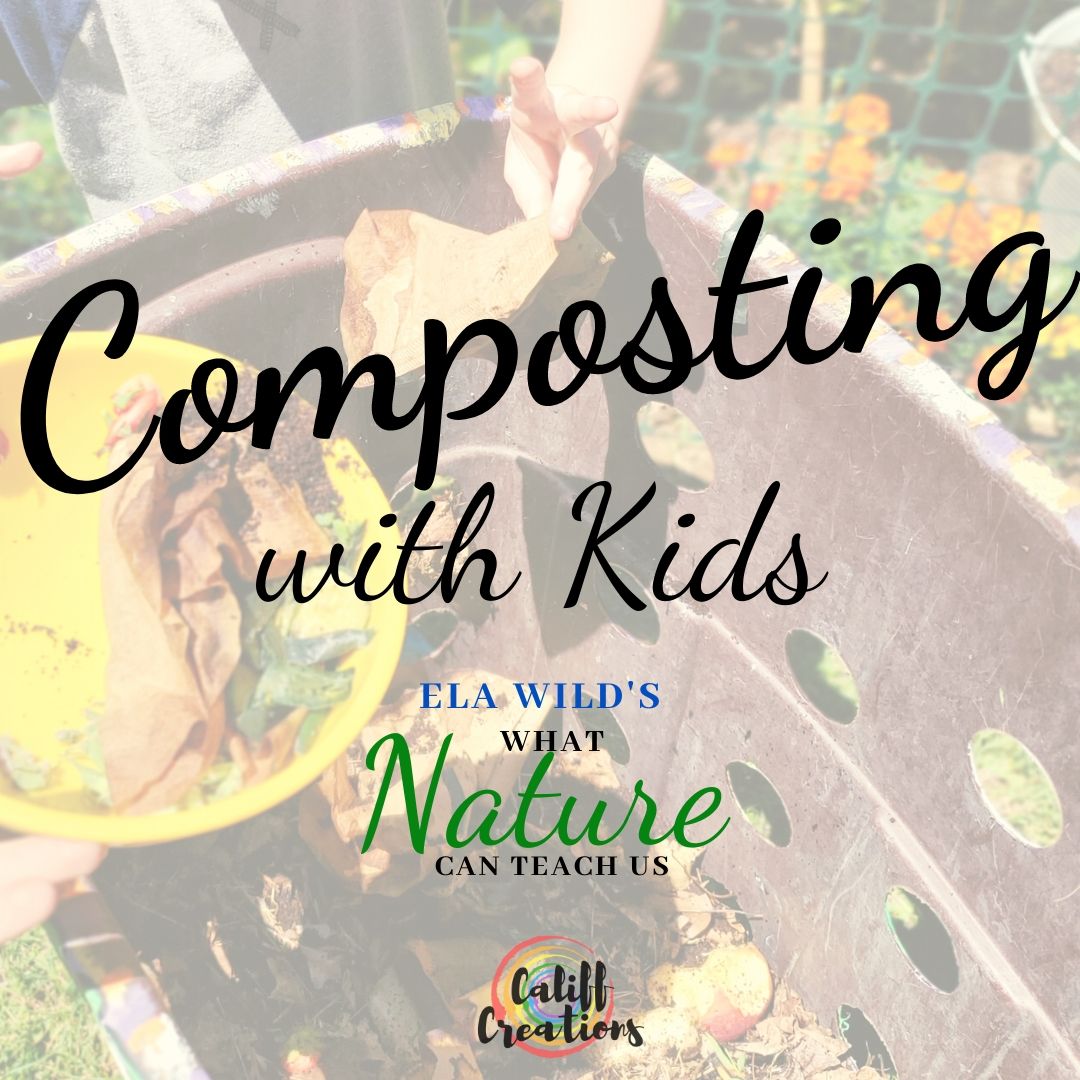
Composting with Kids: What Nature Can Teach Us
We can learn from nature in many ways but getting hands-on experience is irreplaceable. That is one of the reasons I was so excited to start composting with my kids. The amazing thing about compost is that you can make it anywhere. Whether you live on a farm or in a small apartment, there are ways that you can learn to compost and teach your kids about composting.
This post includes affiliate links. That means that if you purchase through these links that Califf Creations will receive compensation that is of no extra cost to you. This helps cover the costs of Califf Creations. You can read more on my disclaimer page.
What is Composting?
Composting is a natural process that happens when organic matter breaks down and creates the nutrient-rich matter that is referred to as compost. You reduce your carbon imprint by reducing waste and take a step toward more sustainable living. This is a valuable skill for children to have and is full of learning opportunities. Plus, I haven’t met a kid who doesn’t like to dig and play with dirt. Composting is a fun way to make it educational!
Why Should I Compost?
Simply put, it is great for our planet. It reduces food waste, keeping it out of landfills where it doesn’t decompose properly. Composting this food waste at home reduces the amount of methane released into the atmosphere and our groundwater. By composting with kids, we are showing them that we care about the environment and raising them to be conscious of the amount of waste they produce.
Composting with Kids
There are many ways to start composting with kids but the basic process is the same. You will fill a container with compostable materials, keep it moist, and watch the process unfold. Since we have an outdoor garden and the space to do it, we chose to make a compost bin out of an old garbage can that allowed the kids to be involved for the entire process. If it is within your budget, you can also buy tumblers or simple compost bins depending on your commitment. Maybe you just want a cute farmhouse counter-top compost bin. Whatever you chose, the point is just start!
Keep reading for a fun way to teach kids about composting even in an apartment!
DIY Garbage Can Compost Bin
Making a simple compost bin out of a simple garbage can is a fun way to have kids involved with the entire process. First, we drilled large holes into the sides and bottom of the can. We didn’t have a lid for our can but if we did there would have been holes in that too. This is so that there would be enough airflow to help the composting process.
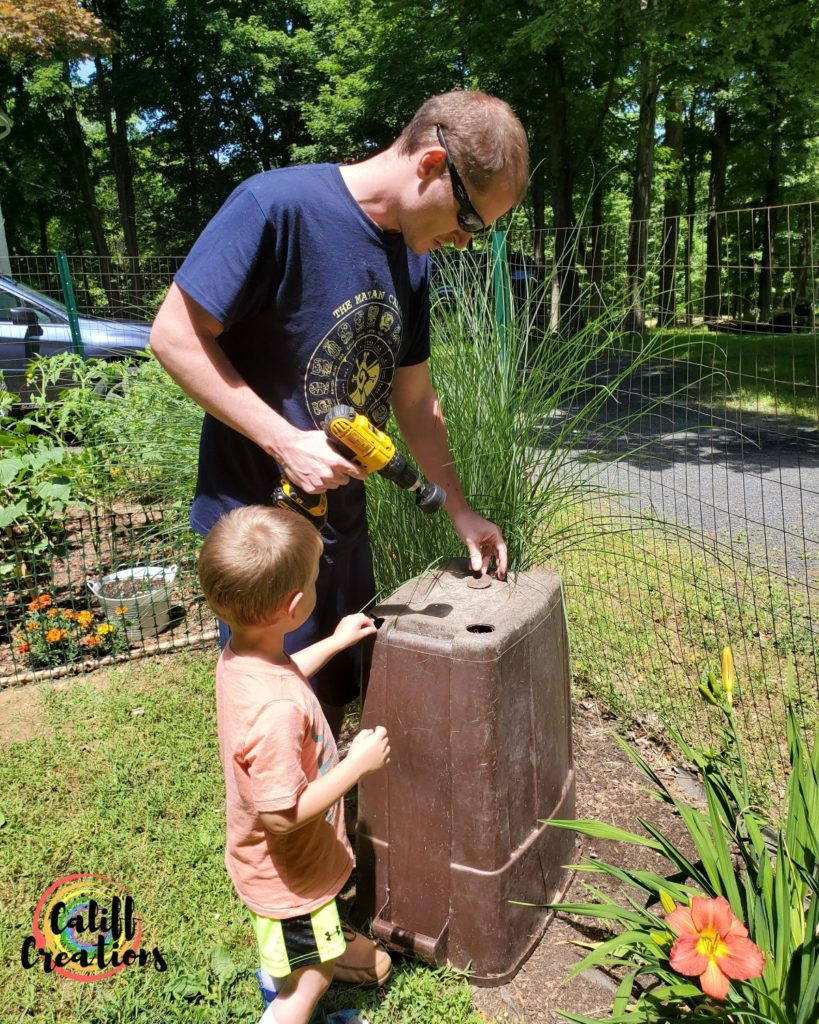
Next, my kids helped me paint the compost bin. It is an optional step but was a lot of fun and makes it prettier to look at!
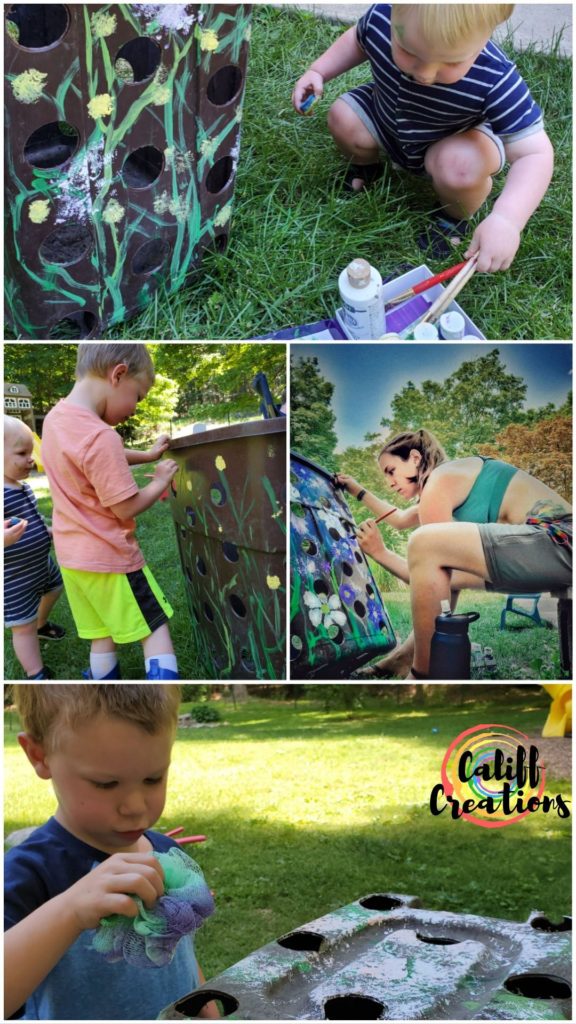
Finally, we went to fill the can. The compost needs a healthier mixture of brown and green materials. These provide the necessary balance of Nitrogen (green) and Carbon (brown) for the best compost. You want to try and shred the material as much as possible to aid in its decomposition.
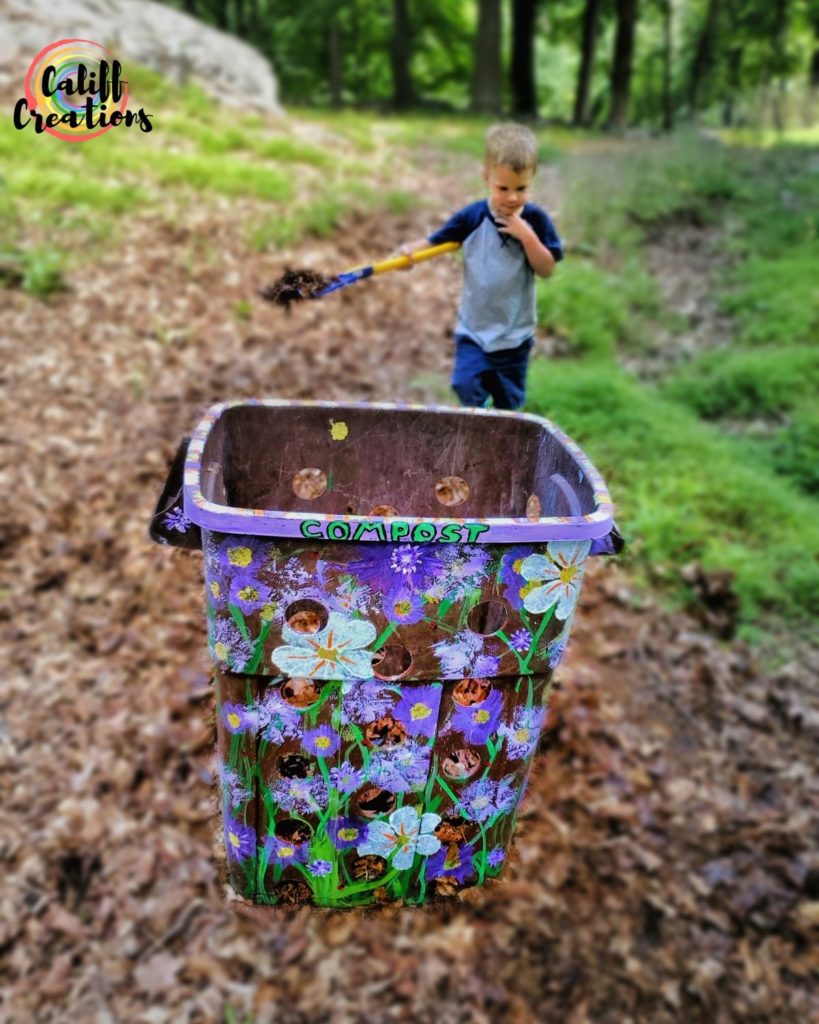
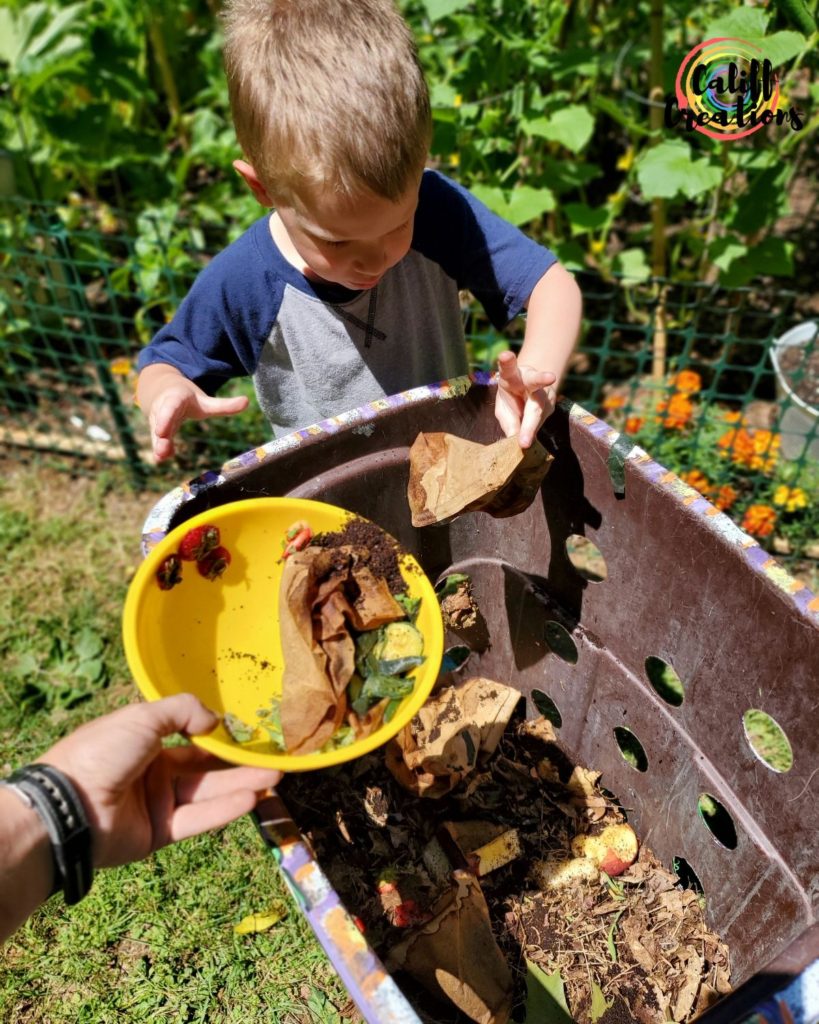
What Can I Compost?
You want to try to maintain between a 50:50 and 75:25 ratio of brown material to green material for a healthy compost.
Browns (Carbon): dried leaves, newspaper, cardboard, paper egg cartons, sawdust
Greens (Nitrogen): kitchen produce scraps, grass clippings, freshwater fish tank water, coffee grounds
Eggshells are also great as they add calcium to the compost.
DO NOT compost anything from an animal like meat, fat, cheese, or oil
Once the compost bin is filled, you have to keep it moist and turn it with a shovel or big stick and watch the material breakdown into compost. It takes constant monitoring, responsibility, and patience and so composting with kids is a great way to teach these life skills to children.
Bonus Learning Opportunity
How many different bugs can you find in your compost? They help breakdown all the material and help maintain the health of the compost. Worms are especially good to have and many people will add them intentionally to speed up the process of composting. Your compost bin is full of microbes, take the chance to learn about them together. Read to the end of this post for book suggestions that will help you learn about microbes in the soil.
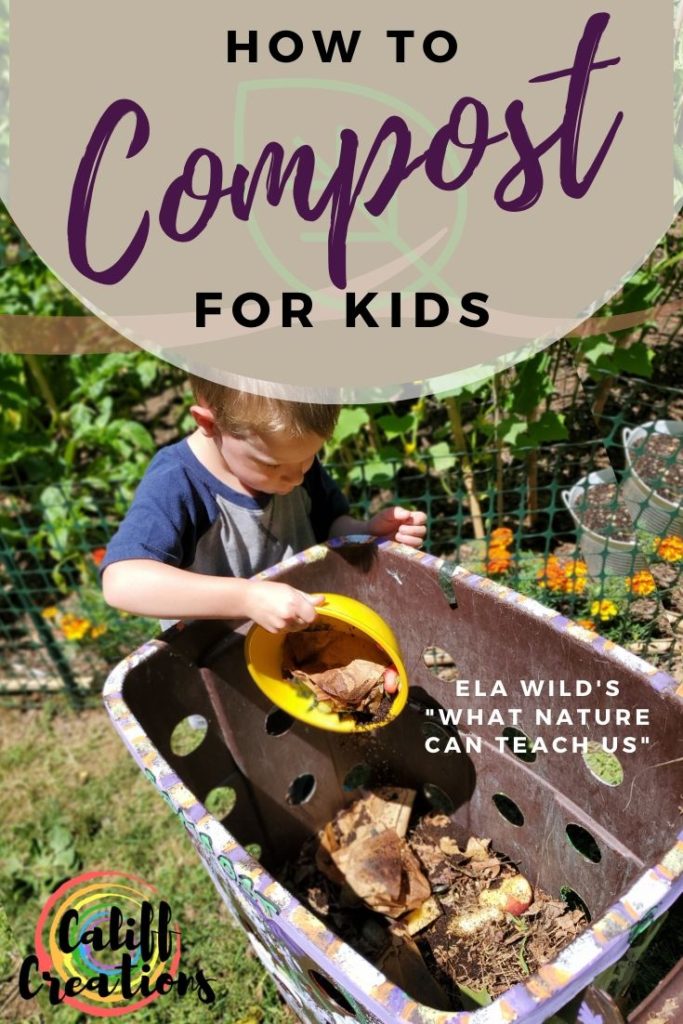
Soda Bottle or Mason Jar Compost Bin
This is a super easy activity and anyone can do it no matter where you live. It is perfect for kids who live in an apartment to learn about composting. Simply add layers of soil and kitchen scraps into a clean 2 liter soda bottle or a large mason jar. Add a few pieces of shredded newspaper, dry leaves, kitchen scraps or some coffee grounds.
Alternate layers of browns and greens and end with a layer of dirt. Maybe fill a couple of different containers with different ratios to compare the composting process with the different mixtures.
Wet the material so that it is damp but not soggy and poke some holes in the top to allow air in. You will have to tend to the jars, adding water at times to keep moist. This is the same as with a large bin outside and teaches the same patience and responsibility.
It takes 2-3 months but once the process is complete you can use this compost for planting flowers or growing herbs indoors as well as outside. This is such a fun way to teach kids about sustainability and compost no matter where they live.
Bonus Learning Activity
Create a worm farm! You can buy one from Amazon or simply add some worms to your existing compost bin (outside or in your DIY mason jar) to watch them burrowing in and out of the fresh compost.
What Else Can Kids Learn from Composting?
Science
Even young children can learn science through composting. They learn about the process of decomposition and what the meaning of “biodegradable” is. As kids watch the organic matter decompose and turn into compost, they may wonder why the container isn’t disappearing as well. This is the perfect illustration to teach kids about the difference between material that is biodegradable and material that is not. Use this natural curiosity that children have to explain why single-use plastic is so bad for the environment.
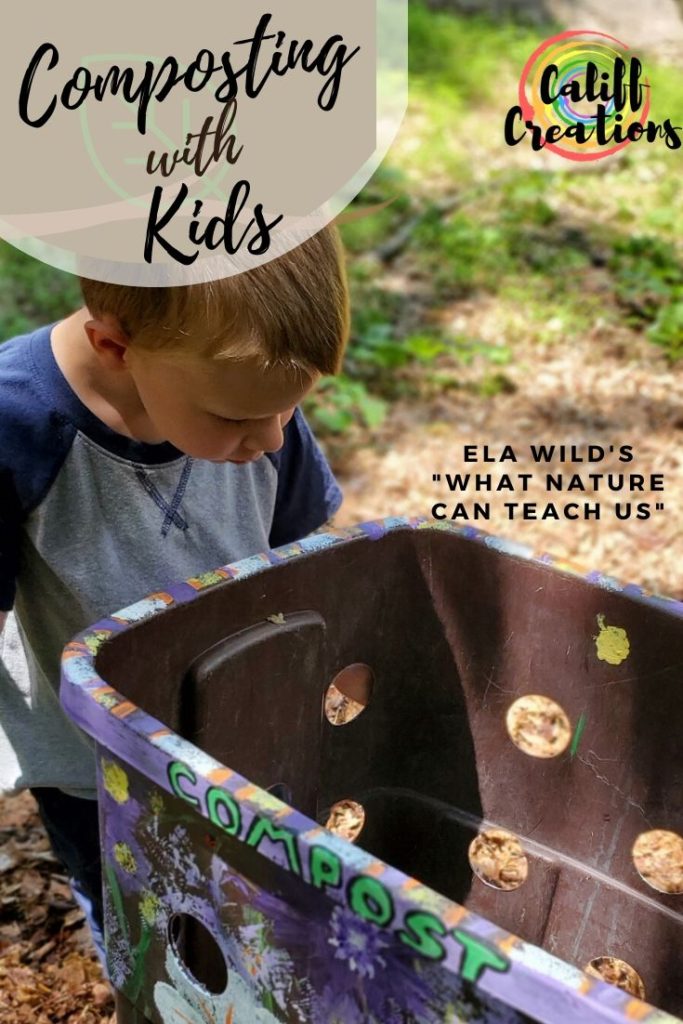
Recycling
Composting can be looked at as an extreme form of recycling. We are recycling our organic waste into a material that we can use to grow something else. Some material that is not biodegradable can still be recycled. Plastic and glass like the compost bins that I described above can be recycled through a more complicated process which is why they are separated from our usual trash. Teaching kids about the differences in materials and their recyclability will help them to understand the importance of reducing waste by choosing the reusable options.
The Life Cycle
There is no better demonstration of the life cycle than composting when combined with gardening. Kids can watch the entire process of dead organic material breaking down (decomposition) into compost and then use that compost to grow something new. It is a beautiful process. Growing something edible helps to complete the circle in a child’s mind, although growing flowers can be just as rewarding.
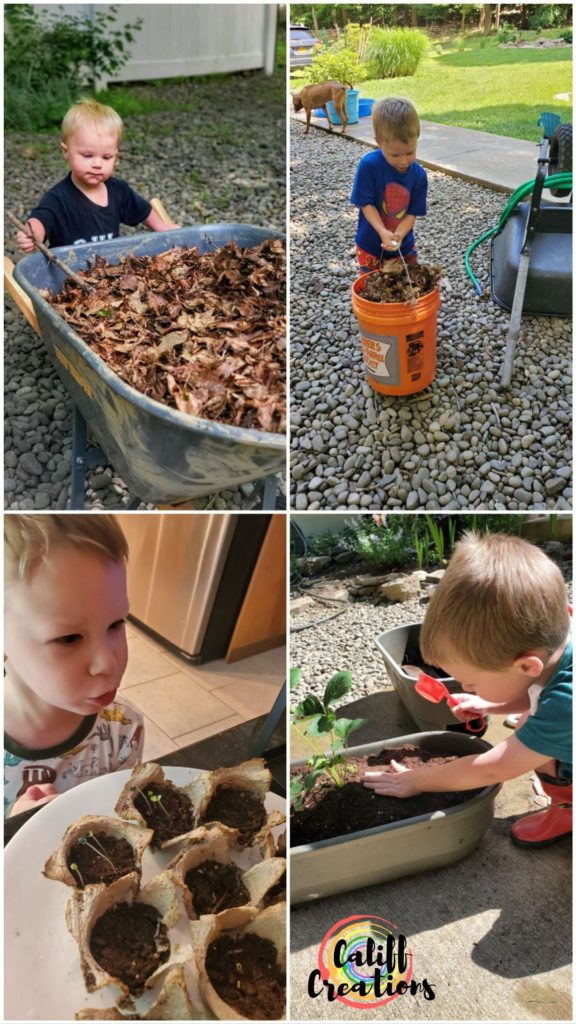
Composting helps kids learn about kindness, respect, responsibility, patience and so much more. It teaches valuable life skills including self-sufficiency and confidence in their abilities. When this lesson is brought full circle by growing your own food, kids will reap the rewards of eating food that they grew and truly learn about life and sustainability through composting.
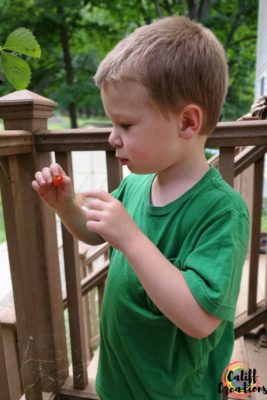
Here are fun books for teaching kids about composting:
The Litter Composter
by Jan Gerardi
Magic School Bus Meets the Rot Squad: A Book About Decomposition
by Joanna Cole
Composting: Nature’s Recyclers
by Robin Koontz
Compost Stew
by Mary McKenna
Garbage Helps Our Garden Grow: A Compost Story and Wonderful Worms
by Linda Glaser
The Worm
by Elise Gravel
Wiggling Worms at Work
by Wendy Pfeffer
A Pill Bug’s Life and An Earthworm’s Life
by John Himmelman
Grubs, Bugs, and Worms: Invertebrates of the Underground
by Jody S. Rake
Tiny Creatures: The World of Microbes
by Nicola Davies
Want to try your hand at composting with kids? Start anytime and post your home composting ideas on Instagram using #ElaWildChallenge so I can see all your wonderful pictures! Follow @CaliffLifeCreations on Instagram for more gardening and sustainability tips from your favorite adventure mom!
Don’t forget to check out the rest of Ela Wild’s “What Nature Can Teach Us” series, including one all about Earthworms!
Pin these book recommendations for later!!!!
